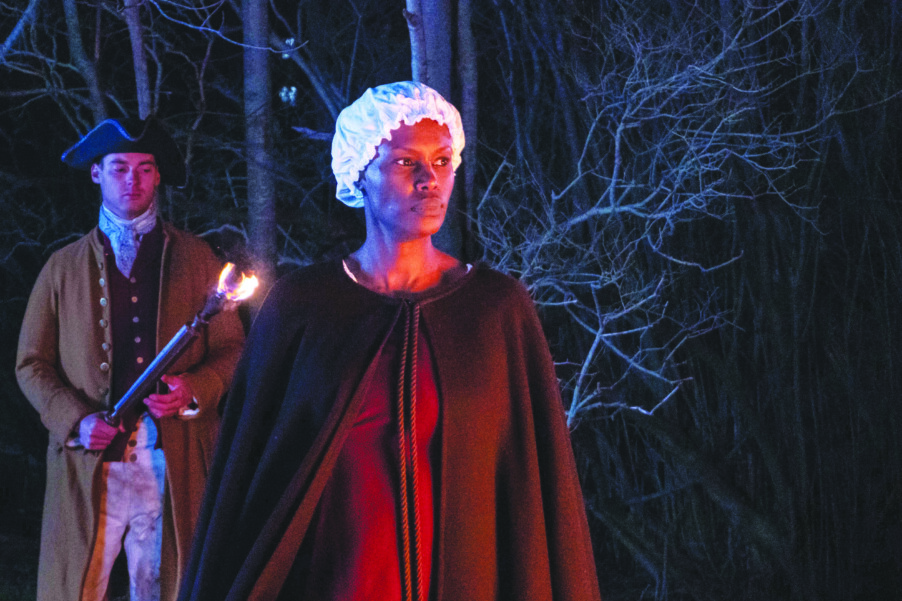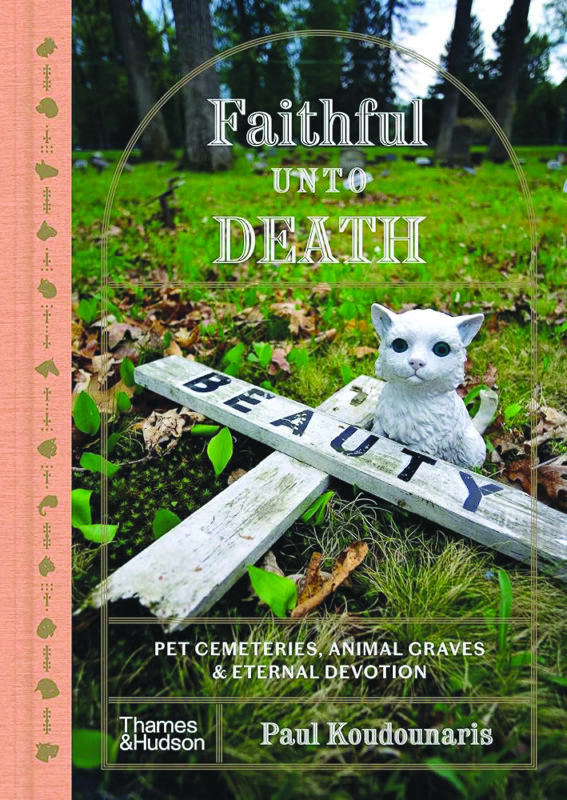Juror #2 (PG-13)
A juror realizes he has a pretty significant connection to the case he’s on in the Clint Eastwood-directed courtroom thriller Juror #2, a competent, enjoyable movie.
Justin Kemp (Nicholas Hoult) attempts to get out of jury duty by explaining that his wife Allison (Zoey Deutch) is in the final weeks of a high-risk pregnancy, but the judge (Amy Aquino) says nice try and thus Justin becomes juror #2 on what he learns is the trial of James Sythe (Gabriel Basso), accused of murdering his girlfriend Kendall (Francesca Eastwood). As prosecutor Faith Killebrew (Toni Collete) starts to describe the crime in her opening arguments, Justin realizes that Kendall was killed at roughly the same time, in the same general area, where he “hit a deer” (a deer, he assumes) with his car on a rainy night after leaving a bar. Several years sober, Justin didn’t drink at the bar, but just stared down the drink he bought while wrapped up in grief over his and Allison’s previous pregnancy loss. But still, as his AA sponsor and lawyer Larry (Kiefer Sutherland) explains, his history of DUIs and the politics of the case, coming as Faith is running for district attorney, means there will be no going easy on Justin should he turn himself in. Will Justin let the jury convict James? Will anyone figure out that this guy acting squirrely during the whole trial is more involved than he lets on?
Chris Messina plays the defense attorney and the jury members include characters played by J.K. Simmons, Cedric Yarbrough and Leslie Bibb, all bringing nice character notes to their relatively minor roles. Juror #2 across the board has a John Grisham-lite sheen and does a good job balancing a few serious thoughts with character drama. It is takes itself just seriously enough but not too seriously and is neither too clever nor too silly. It is an interesting story, with good performances — an entertaining movie even if it isn’t setting the world on fire. Which makes the most unsettling aspect of this suspense film the movie itself. If you’ve heard anything about it, you’ve probably heard about its half-hearted theatrical release, quick move to VOD (where it seems to be doing well) and its scheduled Dec. 20 release on Max. I’m not sure what this movie’s weird release trajectory means for the future of solid, non-awards-seeking dramas but, I guess, enjoy ’em while we’ve still got ’em? B
Available for rent or purchase.
Conclave (PG)
The pope-picking process is filled with intrigue and a fun amount of cattiness in Conclave.
An old (fictional) pope dies and the Vatican machinery gears up for the election by the cardinals of a new pope. Even as the pope’s close associates — such as cardinals Lawrence (Ralph Fiennes), Bellini (Stanley Tucci) and Tremblay (John Lithgow) — pray over his very recently deceased body there is political jockeying. Three weeks later when the cardinals from all around the world arrive to be sequestered in conclave to pick a new pope, all the men standing in clumps outside, getting in a smoke, have a real Tammany Hall vibe. An Italian cardinal, Tedesco (Sergio Castellitto), seems to be working hard for the top spot, letting anyone who will listen know what a conservative, traditional guy he is, looking to make Latin great again and whatnot. Also a frontrunner is Adeyemi (Lucian Msamati), an African cardinal who seems friendly and popular and has very hardline social views. Bellini doesn’t want to be pope — and tells everybody that doesn’t want to be pope, while also letting fly his opinions about openness and tolerance and, gasp, the involvement of women. And then there’s Tremblay, who seems to be a consensus candidate for the “least worst choice.” As everybody tries to Nate Silver about whose support will go where, a mystery cardinal shows up, Benitez (Carlos Diehz). Born in Mexico, Benitez has served in hot spots — Congo, Iraq — and was recently named the Cardinal of Kabul. He is the new kid everyone in this very clique-y lunch room is whispering about.
A “woo-hoo!” from me came during one of the too-few scenes with Sister Agnes (Isabella Rossellini), a nun from the order of Our Lady of Mess Around and Find Out. Shortly after Benitez arrives, Lawrence asks him to say grace before the meal and when he gives a shout out to the Sisters who prepared the food Agnes gives a little snort-chuckle, which feels like it just wraps up all sorts of things about her relationship with the church and the priests. It was a well-crafted moment (and not even the one I woo-hoo-ed about).
Maybe you’re sick of anything election-y, but Conclave is an engaging dishy drama, particularly if you have some CCD in your past. Stanley Tucci may not be at full speed here but he’s fully compelling as a man wrestling with how much he wants this job he knows he has only a slim chance at getting. Fiennes is also fun to watch as he has to deal with one person and their problems after another while seemingly getting sucked in deeper to his own crisis of faith and maybe just a little bit giving into ambition. And all over, the air is thick with side-eyes, enjoyable soap-opera-esque close-ups and little nuggets of the driest humor. I don’t know that this is necessarily a great movie but I had a great time watching it. A Available for rent or purchase.
Megalopolis (R)
Put the TV show Succession, Julie Tambor’s 1999 film Titus and Baz Luhrman’s Red Curtain movie trilogy in a blender and sprinkle that glittery, stilted-dialogue smoothie with vibes from the old Emo Kylo Ren Twitter account and you get the general idea of Francis Ford Coppola’s Megalopolis, just a weirdo trip of an “I’m using my own money, nobody can say ‘no’ to me” visual project.
New York City is here called New Rome, ruled by Mayor Cicero (Giancarlo Esposito), who I think is supposed to represent the tired status quo. Cesar Catilina (Adam Driver) is sort of a tech bro-ish inventor of a Vibranium-esque does-everything material called Megalon. Cesar is also an architect type who is part of the Design Authority that is building/seeking to build a bunch of Dr. Seuss twisty nonsense that somehow represents society’s improvement. Party girl Julia Cicero (Nathalie Emmanuel) takes a shine to Cesar but, like, shouldn’t — it feels like one of those “he’s a genius, I can fix him” situations that just makes you sad for women in film. (This whole movie is filled with female characters that seem to only exist in relation to the male characters, with no independent motivations or thoughts.) Cesar’s uncle Hamilton Crassus (Jon Voight) is the richest man in the, let’s say, world and helps to fund Cesar’s vision. Also a Crassus nephew is Clodio Pulcher (Shia LaBeouf), a weaselly fail-son with an interest in fascism. And then you have Aubrey Plaza as a TV money honey with gold digger ambitions, Grace VanderWaal as a pop girlie vestal virgin, Jason Schwartzman I think still playing his Hunger Games character, Laurence Fishburne as a narrator and, why not, Talia Shire and Dustin Hoffman. Plus Cesar and Julia can sometimes stop time — figuratively or literally, you decide!
If all that sounds like a bunch of unconnected words, that is a pretty good sense of what it’s like to watch Megalopolis. The most consistent element of the movie is the visuals, in particular the way the clothes are designed to sell a “Rome but make it modern” fashion aesthetic. Lotta belted drapiness — but I’m not mad at it! The movie’s costume designer (Milena Canonero, according to IMDb, who has done some costume design in Wes Anderson movies) seems to be having fun with the idea of, for example, translating Rome senate robes to male business looks. It may even be worth a costume design Oscar nomination.
Then there’s the Adam Driver of it all — taking this whole thing very seriously. Maybe a little too seriously? But occasionally you get moments of him making the whole ridiculous Shakespearean vibe legitimately funny (Google “Adam Driver back to the club”) or making it feel like an actual human is involved (a few but not all of his scenes with Emmanuel), which feels like a real accomplishment for a movie this turned-up-to-11 at all times.
Megalopolis is long and rambling, though you get the sense that Coppola would tell you every minute is intensely necessary. I don’t feel like it’s intensely necessary for anyone to watch it but, some day when its rental price comes way down or it shows up on some streaming network, this experiment in an almost comic book movie approach to Ideas-based filmmaking is worth a viewing as a curiosity. C+ Available for rent.
Spellbound (PG)
A 15-year-old princess is trying to keep up family appearances after her parents, the king and queen, turn into giant destructive monsters in the animated musical Spellbound.
I’m going to spoil the end of the movie because the “what it’s all about” might hit some families harder than others: “My parents are monsters” is clearly fairy tale metaphor territory. In this case, it’s a couple that have stopped operating successfully as a couple or even a team of co-parents but have become, literally, trapped in their own anger. The movie does a good job of addressing what that means for adults and how parents who don’t have the same love they once had for each other can still work together to make their child feel unconditionally loved and supported. And how kids can trust that love as a forever thing, even if their parents’ marriage isn’t. All of this is I think pretty well told but I can also imagine that for families going through it this might not be a fun movie night.
With the help of royal advisers like Nazara (voice of Jennifer Lewis) and Bolinar (voice of John Lithgow), Princess Ellian (voice of Rachel Zegler) has done a good job of making sure the right things get signed and the right people get enough proof of life that the kingdom generally thinks the royal couple are alive, well and in charge. And while they’re alive, King Solon (voice of Javier Bardem) and Queen Ellsmere (voice of Nicole Kidman) are not well or in charge. They are giant, brightly colored fuzzy-and-feathery monsters who don’t recognize Ellian or anyone else and who crash through the palace knocking things over and smashing holes in walls. This can’t go on, Nazara and Bolinar say, and convince Ellian that if they can’t change her parents back then she will become queen.
Ellian agrees because she has a plan that involves a pair of Squishmallow-esque oracles — Luno Oracle of the Moon (voice of Nathan Lane) and Sunny Oracle of the Sun (voice of Titus Burgess). The Oracles are sort of horrified that the royals are literal monsters but eventually explain the quest Ellian must take her parents on to turn them human again.
Along the way, Bolinar accidentally trades bodies with Ellian’s pet rat, the palace guards chase the family in order to catch the monsters they don’t believe are the king and queen and there’s a lot of completely acceptable singing that I don’t remember a single tune from.
Spellbound is a perfectly cromulent example of the mid-level animated feature. Spellbound doesn’t break new ground but it does tell a story with well-crafted emotional beats and enough fuzzy creature goofiness to satisfy kid viewers. B- Streaming on Netflix.
Piece by Piece (PG)
The life and musical career of Pharrell Williams gets the autobiography documentary treatment in the animated Lego movie Piece by Piece.
In some ways this is a fairly straightforward look at Williams’ life and impact on music, with discussion of his longtime love of music and talking heads telling their parts. Except that everybody here, from his parents to Snoop Dog and Gwen Stefani, is rendered as Legos in a Lego world. This animated element allows for a nice visual exploration of Williams’ discussion of his relationship to music — how it makes him feel, what he sees and thinks about when he’s listening to music and creating music. And his Behind the Music-style “dark period” is about what sounds like basically a creative block, which he talks about working through.
The Lego of it all makes the movie perhaps appear on its face to be a kids’ movie. While the songs have been, as far as I can remember, largely edited to only their PG parts and a “PG Spray” fogs up the room for Snoop’s scenes, it is a movie that is probably of more interest to adults or older kids who are familiar with the music. I could see the movie appealing to musically or creatively inclined kids — but again, probably an older audience than the bigger-tent The Lego Movie-style Lego movies.
But for adults and those older kids, Piece by Piece is a fun and visually exciting charmer. A Available for rent or purchase.
Gifts for movie-lovers
• Oscar Wars: A History of Hollywood in Gold, Sweat and Tearsby Michael Schulman. This 2023 book is a delight for movie history fans. It looks at different periods of Oscar races, from the silent film years through a coda on The Slap, and uses Oscar campaigns as a way to look at the movie industry and wider culture. My current read is November 2024 release Box Office Poison: Hollywood’s Story in a Century of Flops by Tim Robey, an interesting examination of eras in movies through the lens of box office bombs.
• This Had Oscar BuzzNow that Patreon allows you to gift memberships, you can give a fellow movie lover a subscription to this podcast hosted by Joe Reid (who does the Cinematrix game and Movie Fantasy League, both over at Vulture.com) and Chris Feil (an excellent freelance writer and thinker about movies). The show produces one regular episode a week plus bonus episodes for subscribers, which in this award season include quick-hit looks at award nominations. Make it a deluxe gift by also giving a subscription to Demi, Myself and I, a Patreon-subscription podcast where Joe Reid looks at the films of Demi Moore.
• Movies at Red River Theatres This downtown Concord theater sells gift certificates, gift memberships (which, depending on the level, can come with discounts, movie passes, free popcorn and more) and Dinner and a Movie packages, which feature two movie passes plus a $25 gift certificate to a participating restaurant for $40, according to redrivertheatres.org.
• Movies at O’neil Cinemas The O’neil Cinemas at Brickyard Square in Epping sells gift cards, which can be purchased online at oneilcinemas.com.
• Movies at Chunky’s If you like to give a physical thing with your gift card, Chunky’s Cinema Pub in Manchester offers gift boxes (with a gift card, movie pass and popcorn pass) themed to look like movie candy and gift baskets (with a gift card, admissions and popcorn passes and theater candy, all in a popcorn bag or bucket, depending on the size). See chunkys.com.
• Movies and more at Smitty’s Cinema Gift cards to Tilton’s Smitty’s Cinema also cover purchases in the GameLAB with its arcade and other attractions. See smittyscinema.com.
• MUBI You can gift the streaming service that offers a changing roster of independent, international and other not-your-standard blockbuster films. A big deal film currently streaming is this year’s Demi Moore stand-out The Substance — you can even get a “We are sorry you didn’t appreciate your experience with The Substance” T-shirt (that’s a particularly chilling phrase from the movie) to level up your gift.






